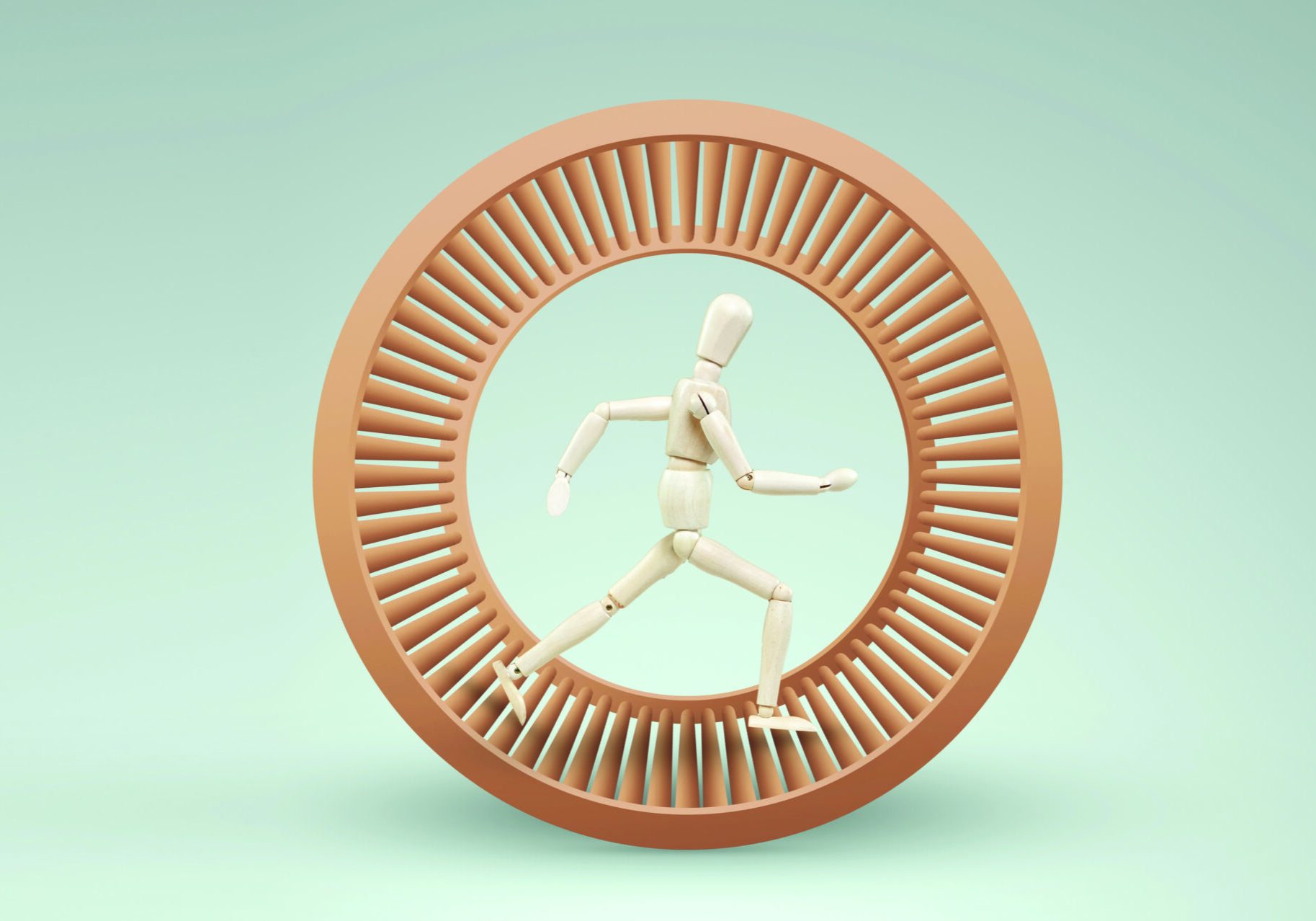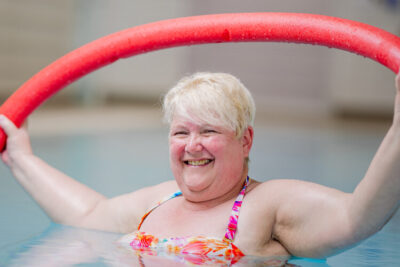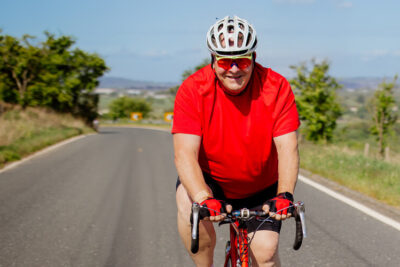
Stepping Off the Hamster Wheel
by Melva Burton
I can’t believe that it’s nearly three years since I started writing the Mindfulness and More column. As I sat down to begin this one, I realised that I was struggling to choose what to focus on this time round. So, I decided to settle down for a few minutes of mindfulness practice to quieten my busy mind. My eyes were drawn to a bookcase rammed with mindfulness books.
Back in 2016 I started studying for an MSc in mindfulness with Aberdeen University. A great adventure. Preferring ’real’ texts, rather than the e-book versions, I amassed a sizeable library of interesting reads. As I scanned the shelves a book with a purple cover (my favourite colour) appeared to be calling for my attention. It was a book by Vidyamala Burch. Vidyamala is the co-founder of Breathworks, which was set up in 2004 and is a charity focusing on mindfulness for pain, illness, stress and wellbeing. What is more, it’s not based over in the States, the centre of London or up in the wilds of Scotland but in the middle of Manchester. A bit of Northern Soul? The Mindfulness-Based Pain Management Programme, developed by Vidyamala following a series of spinal conditions which left her needing to use a wheelchair, has been shown to improve self-management of pain and improve the quality of life.
We can let go of the past and future slow down and pause.
Vidyamala describes mindfulness as “living in the moment, noticing what is happening and making choices in how you respond to your experience, rather than being driven by habitual reactions.” Similarly, Thich Nhat Hanh says that it is “the act of bringing one’s full attention to what is happening in the present moment”. For Ed Halliwell it is an ABC skill: the more that we are aware (A), and can skilfully be (B), the more our range of choice (C). I could go on… there are many definitions in the volumes in my book case. For most of us there are times when life can feel like a turbulent ocean. As Jon Kabat-Zinn points out: we can’t stop the waves but we can learn to surf. Alongside that, Vidyamala tells us that it is possible for us to rest in the calm depths of the ocean rather than being tossed around by the waves and the surface chaos of our lives. Mindfulness practice can benefit us all, regardless of whether we are a child, a teen or an adult. There are so many distractions for us human beings (or, maybe more accurately, us human doings) in our fast-paced digital age. Vidyamala reminds us that “mindfulness is only one breath away”and she suggests that we give ourselves a gift of the present moment. A delightful gift indeed.
But do we really want to live our whole lives on autopilot?
A theme that appears frequently in mindfulness teachings focuses on our tendency to live life on automatic pilot and the impact that this can have on our lives. Autopilot has its benefits for dealing with mundane activities and everyday routines. When the brain is in autopilot mode stuff gets done quickly, accurately and without conscious thought.
But do we really want to live our whole lives on autopilot? I certainly don’t. Mindfulness practice gives us an alternative to automatic pilot by encouraging us to step out of doing mode. We can let go of the past and future, slow down and pause. Back in 2005 Jon Kabat-Zinnwrote ‘Coming to Our Senses’, outlining how the power of mindfulness can be harnessed to effect change in our personal lives and in the world. When we are feeling overwhelmed or worried, if we come to our senses then we bring ourselves into the present moment. We can quieten that busy mind simply by focusing on what we see, hear, touch, smell or taste. In doingthis we are able to take in the good stuff around us too. Practising this up on the allotment I see how the vegetables are coming on, I hear a blackbird’s song, I touch a blade of grass, smell the sweet peas and – if I’m very lucky – taste a strawberry or two.
So, if we set an intention to weave little bits of mindfulness practice into our daily lives, then there are lots of ways we can step off that hamster wheel for a moment or two. In pausing and coming to our senses we are able to shift out of doing mode. As we move into being mode, we are more likely to notice some of the summertime good stuff that’s around us.

To practise the Ice Cream Meditation, follow these steps.
1. Decide what flavour of ice cream to eat. Maybe try something new.
2. Place some scoops in a bowl. Pause and look closely. Really observe the texture and colours. Spend a few moments letting your eyes soak up every detail.
3. Now take in the smell. Notice what is happening in your mouth and whether you are salivating as you anticipate the experience of eating it. Notice the feelings in your body.
4. Place the first spoonful on your tongue and notice what happens. Feel the sensations of melting and notice the way the flavours are released as the ice cream dissolves. Resist the temptation to gulp it down. Let the flavours linger.
5. When you feel that you have fully experienced all that this spoonful has to offer swallow it and notice how your mouth feels now.
6. Repeat with another spoonful of ice cream. Really experience it instead of rushing on to the next one. Enjoy all the flavours, smells and sensations as you linger with each mouthful.
7. When you have finished your ice creamspend a moment or two reflecting on whether this was different from your usual ice cream experience.
Adapted from Vidyamala Burch’s ice cream meditation in her book ‘Mindfulness for Women’..
NorthernLife July/August 2022




